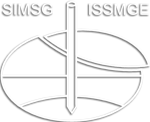Effect of different drying techniques on calcium carbonate precipitation using MICP
Effect of different drying techniques on calcium carbonate precipitation using MICP
The demand for suitable ground for construction has led to the development of various approaches to improve soils with inferior engineering properties. These include conventional techniques like ground compaction, soil reinforcement, lime stabilization, and applying admixtures made of chemical and cementitious compounds. However, some of these methods are cost-intensive and neither economical nor environment-friendly. Given this, MICP (microbially induced calcite precipitation) is emerging as an environmentally friendly technique for soil stabilization. MICP utilizes bacteria to precipitate calcium carbonate for bridging soil pores and helps in soil strengthening. The present study investigates the effect of different drying techniques on MICP. Drying techniques like oven drying and lyophilization have different effects on crystal stabilization. Change in calcium carbonate morphology occurs with time and is related to moisture loss. The drying affects the crystal size, and the temperature affects the moisture loss rate, affecting the total amount of moisture evaporated. SEM images show the changes in crystal size with temperature and rate of drying. XRD analysis was done to assess the effects of different drying techniques on crystal morphology. As the size and morphology of calcium carbonate crystals directly control the strength of the sample in the case of MICP treatment, hence the variation in temperature and rate of drying can be used for effective crystal precipitation in MICP.
R. Renu; R. Murugan; S. Moudgil; D. N. Arnepalli
9th International Congress on Environmental Geotechnics (ICEG2023)
Advances in Testing and Material Characterization
Geoenvironmental Engineering, Ground Improvement, Biogeotechnical Engineering
https://doi.org/10.53243/ICEG2023-194
